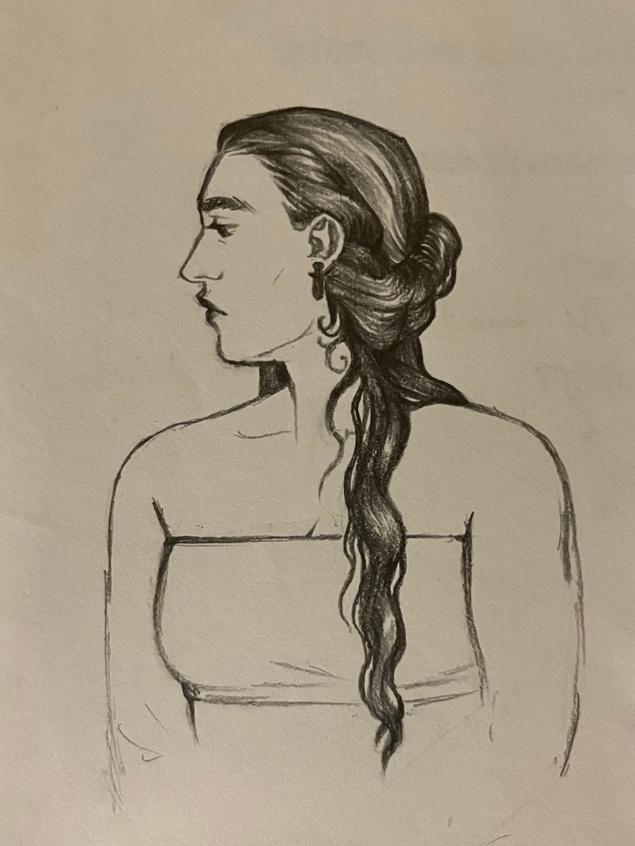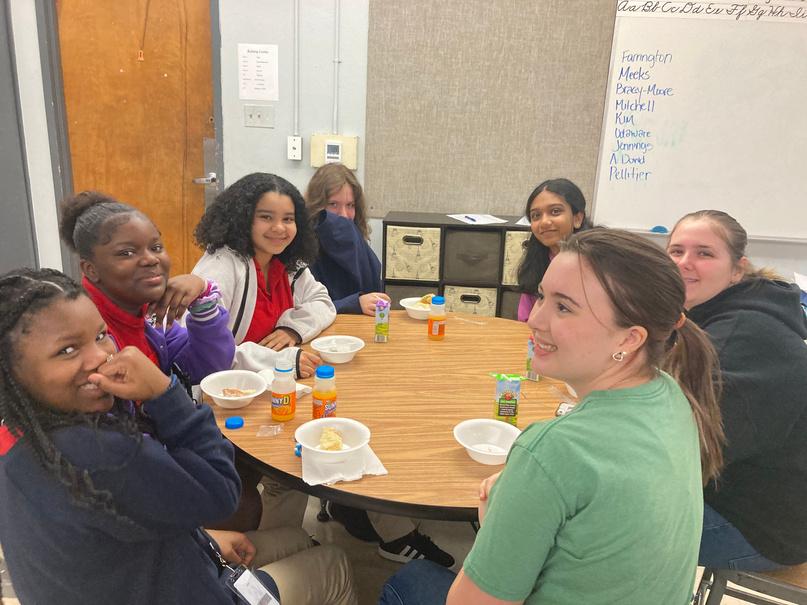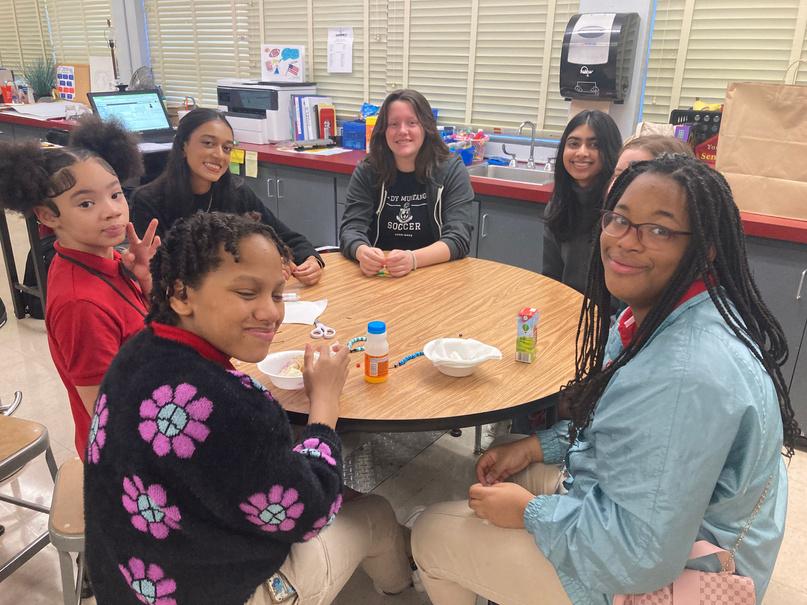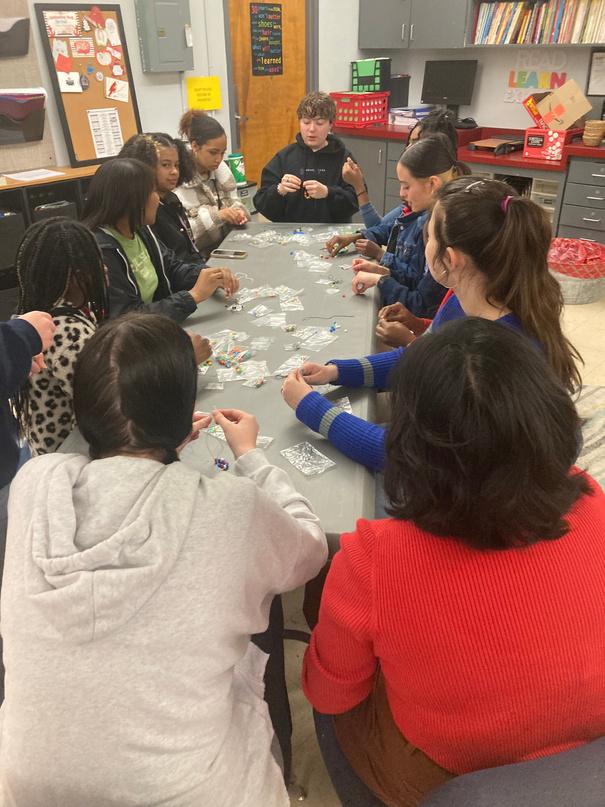s.

WOMEN IN GAZA
THE GENDER WAGE GAP TOXIC MASCULINITY BARBARA
JORDAN POETRY & ARTWORK





Brought to you by


JORDAN POETRY & ARTWORK





Brought to you by
Executive Editors:
Ruby Knoebel and Anjali Veerareddy
Dear Readers,
We are so excited to be presenting this new issue of Ms. Magnet! Unfortunately, it will be our last issue before we graduate, but we look forward to reading new issues of Ms. Magnet long after we leave.
We hope that this magazine will continue to amplify feminist voices at Magnet and that all of the younger students at Magnet will take a chance, p themselves out there, and add to this magazine! Producing this is a communi effort, and we are incredibly grateful fo each of our contributors and our amazi sponsors.
We hope that this magazine will teac you more than historical and current events; we hope that it will teach you how to share your voice and advocate for causes that are important to you. During our four years at Magnet, Girl Up has certainly taught us these lessons.

We hope that you’ll enjoy this final Ms. Magnet issue of the 2023-2024 school year!
Sincerely,
Anjali and RubyTable of
MAGNET WOMEN’S STUDIES CLASS Class Students
GLASS CEILING AND SHINE THEORY
Cici Ware and Sarah Wolcott
Kaylie Nahn
Audrey Kempen
BARBARA JORDAN
Mason Sater
Sadie Sledge
TOXIC MASCULINITY
Aashni Shah and Elizabeth Shoup
WOMEN IN STEM
Claire
WOMEN
TRUE
WOMEN’S
Janetta
FEMINIST TRIVIA
ARTWORK OF WOMEN
Benny
“You have an opportunity to grow in your confidence as a person. You are given an environment to practice public speaking within a space where everyone is forming their own opinions and you understand that your voice is heard and important. The projects really grew my understanding of the history and internal mindset of women. Women of all backgrounds who have used their voice to stand up for women, the women who fought in the shadows, and the women who raised and built up the generations that form our world and understanding of the world now. I know how to be confident and passionate about life without stepping on anyone else’s toes unless I choose to do it on purpose.”
-Natalie France (12)
“I LOVE Women’s Studies. Everyone can share their opinion, and views of the world. It feels like a safe space to truly talk about anything; especially about being a woman in the world. I also love that the assignments ACTUALLY teaches us something about women and how women are affected because of the ways of the world.”
-Hannah Samuels (11)
“You just might find out you have a lot in common with someone you’ve never met before!”
-Blu Pool (12)
“You’ll have consistent full-class discussions where you get to bond and know each other on a deeper level through your shared struggles.”
-Sarah Wolcott (12)
The glass ceiling is a concept coined by modern feminists stating that women are able to see opportunities for success in their careers and personal lives through the galss ceiling but are stopped by the invisible barrier. These barriers include misogynistic social concepts keeping women out of top corporate positions.
Shine Theory is an idea that we should bring your full potential to your friendships and not let other things like envy get in the way of these bonds. It also means that we work better together and not in a constant competition against one another.
Remember to acknowledge those in your life who aided your success - helped you study for a test you did well on, prepared you for a difficult situation, etc.
Try to work together and support each other in your friendship rather than competing for positions and new opportunities. Try to elevate your friends and give them tips rather than brining them down.

If you find yourself gaining a new opportunity, put in a good word for those you care about to help them in their paths. Always look back at where you came from.
War, destruction, displacement, and death: in the Gaza Strip, civilians are facing a severe humanitarian crisis, and women and children bear the brunt of all the devastation.
As of January 19, 2024, the health ministry in Gaza has stated that more than 24,620 Palestinians have been killed 70% being women and children and more than 1.9 million people have been displaced.
For those displaced, seeking shelter under such dire conditions seems nearly impossible, as active military operations make it unsafe nearly everywhere. It is especially unsafe for women and children who make up one million of the 1.9 million people displaced, as they face greater risks of experiencing sexual and or gender-based violence along displacement routes in search of refuge. In addition, many wives have become widows making them the heads of their households, and this has led many women to fear that their children need to marry early to stay afloat. Pregnant women also lack access to medicine/healthcare and both they and their babies have higher risks of malnutrition and other health issues. Along with shelter and healthcare,
major resources such as food and water are scarce under such conditions. But what about other necessities that may go unnoticed to those unaffected or outside of Gaza? For women who menstruate, pads have become a rare luxury.
Since the war began, pads have become harder to find on shelves, and in the rare instances they are restocked, they come at a hefty price that many can’t afford. With a lack of sanitary pads on top of no toilet paper, running water, toilets, and safe places to manage menstrual hygiene, women and girls face the risk of reproductive and urinary tract infections, as well as mental health issues.
Because the humanitarian crisis is at such a large scale, struggling women and girls aren’t receiving all the aid and hygiene products they need and have to take matters into their own hands. Many have resorted to taking period-blocking pills to avoid the whole ordeal, and others are making makeshift pads from old clothes, towels, and even corners of tents that are cut using scissors. Speaking to NPR, Heba Usrof, a young woman in Gaza, says, “It's messy. It's terrible. And nobody speaks about it.” Even during times of war, this issue that
affects a large majority is still seen as taboo to address, as menstruation is (sadly) seen as a sensitive topic across many societies.
To combat the ongoing humanitarian crisis, UNICEF has been able to distribute more than 41,000 hygiene kits (which include pads), and UN Women has passed out 14,000 dignity kits, 2,300 winter clothes packages, 3,200 women’s kits, and 3,793 children’s kits, along with offering recreational activities and mobile mental health services to women and children.
All this to say that this is only a fraction of the aid needed, as the war continues and aid for civilians will only become even further from sufficient.

Although it may feel bleak, actions (no matter how small they are) can be taken to help combat the greater issue at hand and help the innocent Palestinian civilians who don’t deserve to pay the costs of this war. Donations can be made directly to organizations, such as the UN, and for those unable to donate, the website ceasefiretoday.com has links and instructions on how to contact your legislators to demand action. Staying informed of current issues from reputable sources also holds power!

The gender wage gap is the difference in pay between men and women. Consistently, women make less money than men. Census data from 2018 says women make around 82 cents for every $1 men make. That's a wage gap of 18 cents, and that is across all races of women, with some making as little as $.54 for every $1 men make. According to the Pew Research Center pay gap calculator, Women 16+ make on average only 79% of what men make
One main reason there is a gender wage gap is because of a difference in industries. Women and men are often funneled into jobs based on social norms, with women often working in childcare and home health. Historically, female-dominated professions tend to pay less and have fewer benefits than “ men ’ s ” jobs. Another cause of the gender pay gap is years of experience. Women often have less experience in a given field because they are driven out of the workforce by obligations like a new child and are often not paid during this time. Similarly, because of these unpaid obligations, women are more likely to work part-time than men. There is also widespread discrimination, which is especially prevalent in workplaces where salaries are not discussed because it allows the issue of differences in pay to go unnoticed. Some employers also base salaries off of what the employee earned at their previous job, which can lead to discriminatory pay following a woman, even as she changes jobs.
Legislation like the Paycheck Fairness Act needs to be updated. We should also advocate for policies that offer women paid sick leave and paid family care days We should attempt to break through color and gender barriers that confine women to certain jobs. We need laws regarding pay transparency so that the wage gap can’t be hidden by fear of being fired. We should also increase access to childcare both days and nights so that it is easier for women to enter the workforce It has been estimated that the gender wage gap will not close until 2059, but if we advocate for all of these policies, we can change it sooner.
Forbes reports that the five jobs with the highest gender wage gap include real estate brokers, personal financial advisors, insurance sales agents, sales managers, and school bus drivers. According to Forbes, the five jobs with the lowest gender wage gap are life, physical, and social science technicians; physical therapists; bartenders; special education teachers; and cashiers.
There is a larger gap in pay for women of color. The gap has only closed 4 cents in 10 years.
The city in the US with the lowest average gender wage gap is Napa, California with women making 98% of what men make It is estimated that closing the gender pay gap globally will take 257 years.
Men in the legal field earn 59% more than women in the legal field on average.
Even in a diversifying nation, the prominent face of American politics continues to be the caucasian male. About 75% of Congress is white, and less than 30% is female, and in 1970, there were fewer than twenty women in the House of Representatives.
Despite the odds against her, Barbara Jordan's initiative prevailed over the spirit-crushing disparities before her. Barbara was born into a life of discrimination in Houston, Texas, in the 1930s. However, by the time segregation ended in Texas in the 1950s, she had constructed a brilliant persona that would only grow further throughout her high school career.
As one of the lead debaters at her school, she would gain a bid to a national debate tournament and win. She would go on to continue her career at Texas Southern University, an HBCU that had been created less than a decade before. Her status as a great mind and symbol would be sparked as she led her debate team against Harvard, ending an intense match in a tie.
Graduating magna cum laude, she would earn a spot at Boston University's prestigious law school and become one of two women in the entire school to graduate. After passing the bar exam in Massachusetts and Texas, she shaped herself into a political activist, supporting Democrats like Kennedy and Johnson, who advocated for the Civil Rights Movement.
Knowing that a formal spot in politics would magnify her voice, she would run for Texas Congress until she got a spot in the Texas Senate, becoming the first African American member since the 1800s. The lack of support and collaboration she received while in office would not be a problem, as she harnessed her knowledge of the political process in passing legislation related to minority issues (Voting Rights Act of 1965) and the environment. She even gained President Johnson's attention, as he asked her to promote a message on Civil Rights.
Casting doubters aside with her incredible intellect, she became the first African American woman from the South to earn a seat in the House of Representatives. She was a powerful image for both the female and black populations of America for all three terms she served in the House. She was also the keynote speaker for the Democratic National Convention and proved to be one of the most outstanding public speakers of her time.
Retiring after her third term, she would finish her life teaching at the University of Texas at Austin. With the effects of the Civil Rights Movement beginning to settle in the 1990s, she got the opportunity to watch the demographics of American politics slowly creep closer to the actual reality of the American population. Taking a stance with what she knew was right and working through the skewed standards and stereotypes, her legacy will continue to be that of a pioneer, paving the way for women and people of color.
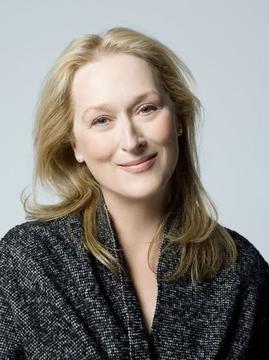
Known as one of the greatest actresses of all time, Meryl Streep has been nominated for the Academy Award twenty-one times over the course of her career, and has won it three times. She is best known for her versatility of roles, starring in everything from tragedy to musicals. Along with her large body of work, she is also one of the longest working actresses, going into her fourth decade of acting at seventy-four years old. What’s so inspirational about her is that her talent that has allowed her to continue her career longer than many other female actresses, as the gender gap for Hollywood causes most women to peak before reaching age thirty. Some of her most famous performances are Mamma Mia and The Devil Wears Prada.
As the first female artist to be inducted into the Rock and Roll Hall of Fame in 1987, Aretha Franklin has made history with her gift of singing and playing piano. At an early age, it was impossible not to notice her musical talent. She started her career by touring with her father’s traveling revival show and later visiting New York, where she signed with Columbia Records. After releasing multiple classics like “Respect,” “I Say a Little Prayer,” and “Think,” she soon earned the title Queen of Soul. At the same time, she became a symbol of Black empowerment during the Civil Rights Movement.
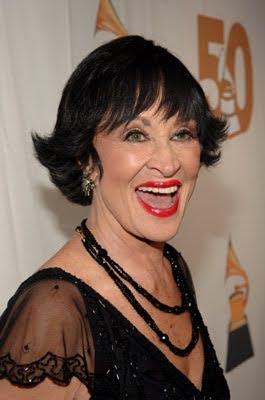
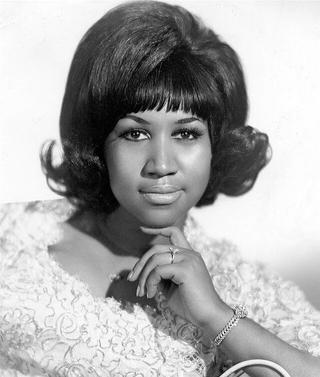
Best known for her performance in Chicago and Bye Bye Birdie, Chita Rivera led her career as a triple-threat singer, dancer, and actress for nearly seven decades. Along with these musicals, she also appeared in multiple stage productions in New York and London, logged 100,000 miles on cabaret tours, and performed in dozens of films and television programs. Most notable about her career is the lineup of strong female characters she portrayed. Naturally born with a remarkable talent for performing, Rivera soon became a star at seventeen years old after premiering as Anita in West Side Story. She served as a role model to many aspiring actresses.
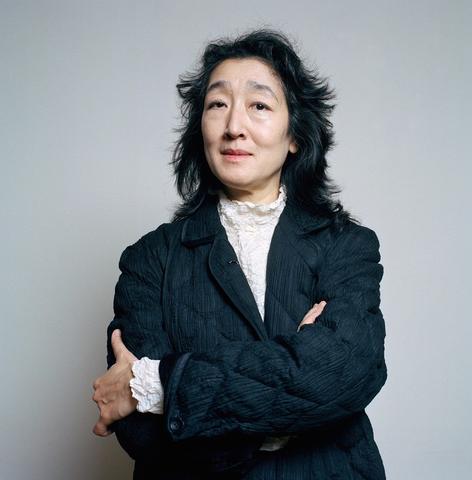
Throughout the course of her career, Mitsuko Uchida has interpreted the works of Mozart, Schubert, Schumann, and Beethoven, as well as the piano music of Alban Berg, Arnold Schoenberg, Anton Webern, and György Kurtág. Her dedication to music has granted her the title of one of the most admired artists of our time. Having been born in Atami, near Tokyo, and moving to Vienna when she was twelve years old, Uchida soon discovered her passion for music. In 1969 she won first prize at the Beethoven Competition in Vienna, with many more awards to come throughout her career. Uchida displays a rare insight to music that is extremely inspiring, as her music is a direct display of an emotional range.
Margot Fonteyn fulfilled her extraordinary dancing career from 1934 until 1979, becoming a beloved classical ballerina. Making her debut as a snowflake in The Nutcracker in 1934, opportunities began to open up as her talent was soon recognized. This remarkable talent introduced her to famous choreographer Frederick Ashton, who would go on to create leading roles designed specifically for her. These roles were extremely versatile in their character, further proving Fonteyn’s exceptional ability. In 1979 she received from the Royal Ballet the title “prima ballerina assoluta,” a title only given to three ballerinas in the twentieth century. Later, she became president of the Royal Academy of Dancing and helped put British ballet on the international map by persuading wellknown dancers from all the major companies to appear with the Royal Ballet.
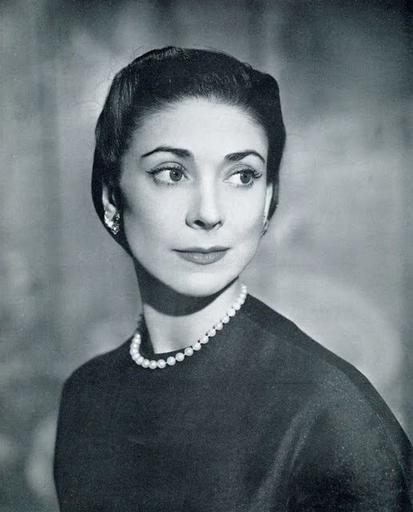
"Toxic masculinity,” a term first coined in the 1980s, is now a popular buzzword that is frequently talked about on the internet and in various media According to the New York Times, “toxic masculinity is what can come of teaching boys that they can’t express emotion openly; that they have to be ‘tough all the time’; that anything other than that makes them ‘feminine’ or weak.”
Toxic masculinity refers to societal expectations of how a “real” man should behave It supports the idea that men should not ask for help, so men are more likely to feel isolated and lonely, leading to feelings of anxiety and depression Likewise, it encourages men to be aggressive and hide their weakness, which causes issues within relationships, such as with communication. Part of the ideal even includes that every man should be tall and strong Overall, toxic masculinity creates an unrealistic standard for what a man should be.
Researchers have come to agree that toxic masculinity consists of three fundamental pillars:
Toughness - This is the concept that men should be physically strong and behaviorally aggressive
Antifemininity - This is the impression that many men are under that any feminine behavior is considered “weak,” such as asking for help or showing emotions
Power - Men are held to the standard of needing to be in a position of high power to be respected socially and professionally
Expectations and restrictions of gender are learned early in childhood and rear their ugly head at schools, including Magnet. Phrases such as “boys will be boys” and “suck it up,” extracurricular sports, books in the school library, and small “jokes'' made by teachers and students can all contribute to these traditional ideas of masculinity.
We took statements from multiple young men about their experiences with toxic masculinity Here’s what they had to say:
"Growing up being very feminine, typically I would get a lot of comments and remarks made to my parents and me that I needed to ‘man up' simply because I liked pink and enjoyed things like performing and art. One of my first memories is getting made fun of in preschool for playing with Barbies; the other boys would tell me that I was supposed to be fighting with Power Rangers and race cars while I simply just wasn’t interested ”
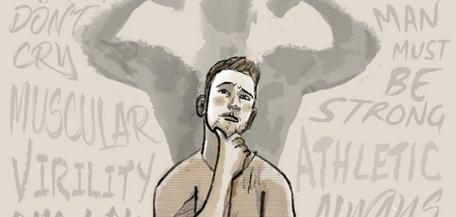
“The best way I can describe toxic masculinity the way I experienced it was a testosterone-fueled kind of 'mob rule,' where a group [my friends] would decide if a behavior was acceptably masculine or if it was too ‘feminine’ calling their peers deriding names, some of which were homophobic or sexist...toxic masculinity was a kind of overwhelming cultural peer pressure that many of them simply succumbed too, and I think that’s how it is for a lot of people.”
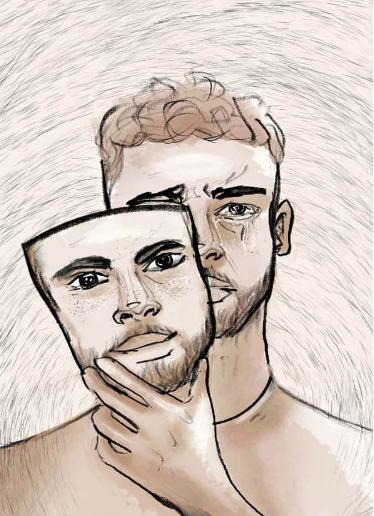
Although these men were aware of toxic masculinity and its negative impacts, most of the other guys we asked did not know what toxic masculinity was After we explained it to them, many realized that they had experienced it. This is why it is so important that we open up this conversation and try to educate ourselves and others about how we are unknowingly contributing to toxic masculinity.
“As a way to express myself, I started experimenting with painting my nails various colors. There’s absolutely nothing wrong with that, painted nails don’t equate with masculinity or femininity However, I still get disapproving comments on the daily, even from my own parents, as if painting my nails makes me less masculine, when in reality it does nothing of the sort. And on the same token, even if it did make me more feminine, what’s wrong with that?”
It is important to note that toxic masculinity harms both men and women alike It forces men into gender stereotypes, criticizing them based on their perceived femininity. This aversion to femininity not only forces men into gender stereotypes, but it portrays being a woman as being weak. As a society, it’s vital to remember that expressing emotions or showing feminine behavior isn’t something that devalues a person Toxic masculinity tries to forcibly categorize men and women; so when we push toxic masculinity, we hinder the progress of feminism and promote sexism.
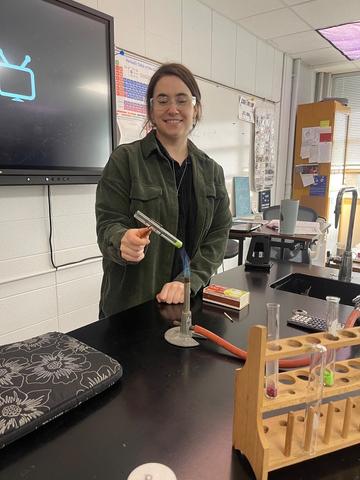
Ms. Carbo
Ms. Carbo
Find the specific topic or science you ’ re passionate about because that will motivate you to do well and make you enjoy what you do. Do not be afraid to fail; learn from it and believe you can succeed. It’s not going to be easy, but anything worthwhile isn’t easy

Ms. Rivet Ms. Rivet
Unlike many who have their paths figured out after high school, I found myself at a crossroads Science didn't capture my interest during those four years, as my heart leaned towards art, history, and languages, where my skills excelled. However, everything changed during my freshman year in college when I enrolled in biology for non-majors. The experience was nothing short of amazing – I was captivated by every detail, relishing in note-taking and eagerly preparing for each test. This marked a pivotal moment. I decided to switch majors and universities, immersing myself in the study of Biology. Once I took my first Chemistry class, I was really enjoying my journey, solidifying my dedication to the field. I really enjoyed all of my classes, as well as doing research. I think that many students are like I once was–they are still figuring out who they are and what they like. My journey unfolded with a blend of diverse experiences, from working in a lab to teaching abroad, delving into circus arts, martial arts, flamenco, and more. Life's twists and turns can lead to unexpected and fulfilling destinations; the key is not to limit yourself You can really do anything!
Within the realm of science, challenges have been a constant companion, particularly during my research endeavors. Unfair judgments and prejudices based on gender were hurdles to overcome Uncomfortable environments and encounters with questionable figures tested my resilience. Yet, none of these challenges veered me off my path; if anything, they fueled my determination to excel. The world of STEM can be daunting, especially due to its male-dominated landscape and limited resources for women. However, the mantra "the future is female" rings true. Despite the prevailing gender disparities, my hope is for more women to break into these fields. To aspiring women in science, my advice is simple: be prepared for others to treat you differently, but never let that be a deterrent, use it to fuel your determination.

Pursue it! More women than men earn bachelors degrees in science these days, but with every step into higher levels the ratio gets smaller. We call it the "leaky pipeline" from undergraduate studies to research faculty to heads of departments. Whatever school you choose, find older women to act as mentors. Your professors are excellent mentors but so are the older students in your major. Make it clear to them early on that you want to continue in science and get their advice. Seek out summer programs, research opportunities, and teaching and research assistant positions. The highest levels of scientific research in the sciences is still done primarily by men, which means our important perspective is left out. Who knows what other developments are possible when more and different minds grapple with the scientific challenges of our time!
The best advice I can give young women in STEM is to support each other. There are plenty of people who will find you intimidating and try to tear you down because of it, especially in highly competitive programs. However, that doesn't mean that you should turn that same venom on the young women who come after you. Help each other and be a part of shifting the culture to be more supportive and collaborative. There is plenty of success to go around, and someone else's success cannot diminish your own.
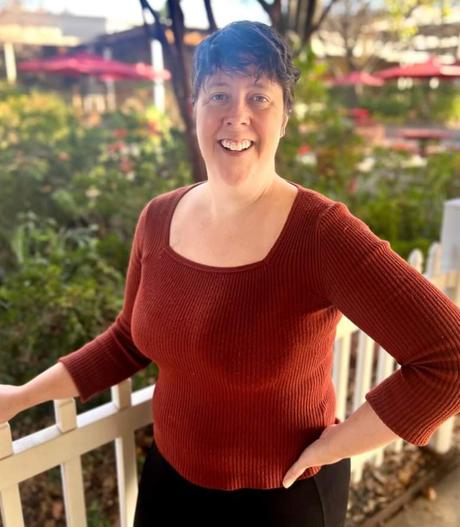 Ms. Lawrence Ms. Lawrence
Ms. Lawrence Ms. Lawrence

Academically, I've always fancied myself more of a humanities gal. Growing up, while I enjoyed learning most subjects, in terms of learning inside four walls, I was more interested in English and history and geography. But! I have always loved spending time outdoors. I grew up in the country and in small towns with strong, single women who were raised in the country too They instilled in me a deep, compelling love for nature and critters. I was also kind of bored a lot because that's how a lot of us used to be before devices, and really needed to be (because boredom often leads to curiosity & therefore, creative pursuits). I didn't have as many practices and things that many of you guys have after school, and I often lived far away from my friends in elementary school So, I spent most of my free time exploring outside. When I was a little kid, I would make pretend plates of "food" for me and my "friends" (imaginary; uhh, it's actually a sign of giftedness) using seed pods from mimosa trees, wild, likely poisonous berries from various plants, dandelion or dock leaves, etc. When I thought of science, I guess it didn't really click for a while that all my nature explorations, from climbing my favorite cedar tree to watching wildlife or stars to growing food for my family – all these things meant that I was actually doing science. It just wasn't inside four walls & I wasn't wearing safety goggles & a lab coat I was observing and doing, and sometimes even recording data or drawing representations of what I observed. So, long story not short, nature. The answer is nature.
In college and grad school part 1, I studied history and learned how to be a detailed researcher. I suppose that detail-oriented nature helps me as I pivot (PIVOT!) to doing real science with my students in our new "ECO-LAB" in T2, greenhouse, outside on our beautiful campus, or on the nature trail. Now, I get to use science and also some fancy new toys/tools to make us become EVEN MORE sustainable, learning firsthand how we can help even more of our wildlife friends and, by extension, ourselves and our planet.
My Queens, women have always been involved in science. They've been selecting and domesticating plants, using those plants & their indigenous knowledge to feed & heal members of their tribe, clan, families In likely most societies around the world, they've been some of the first doctors– delivering babies as midwives, making salves and tinctures from really cool plants, saving lives, often with a baby of their own on their hip. In the big history view of humankind's existence and the advent of surplus food supplies & specialized jobs, it's only been quite recently that it became harder for women to enter the "field" of science once "fields"/specialized professions were invented. And in many places, it's when men felt threatened by these powerful, knowledgeable women, ie. some of the witches in medieval Europe, that men worked harder to justify and enforce patriarchal ideas. So, before Mary Anning or Ada Lovelace or Mary Elliott Hill or Chien-Shiung Wu (it's super sad we may have to Google these ladies), women have been scienceing. It's in our nature. :)
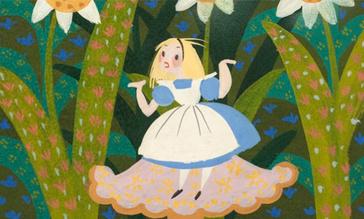
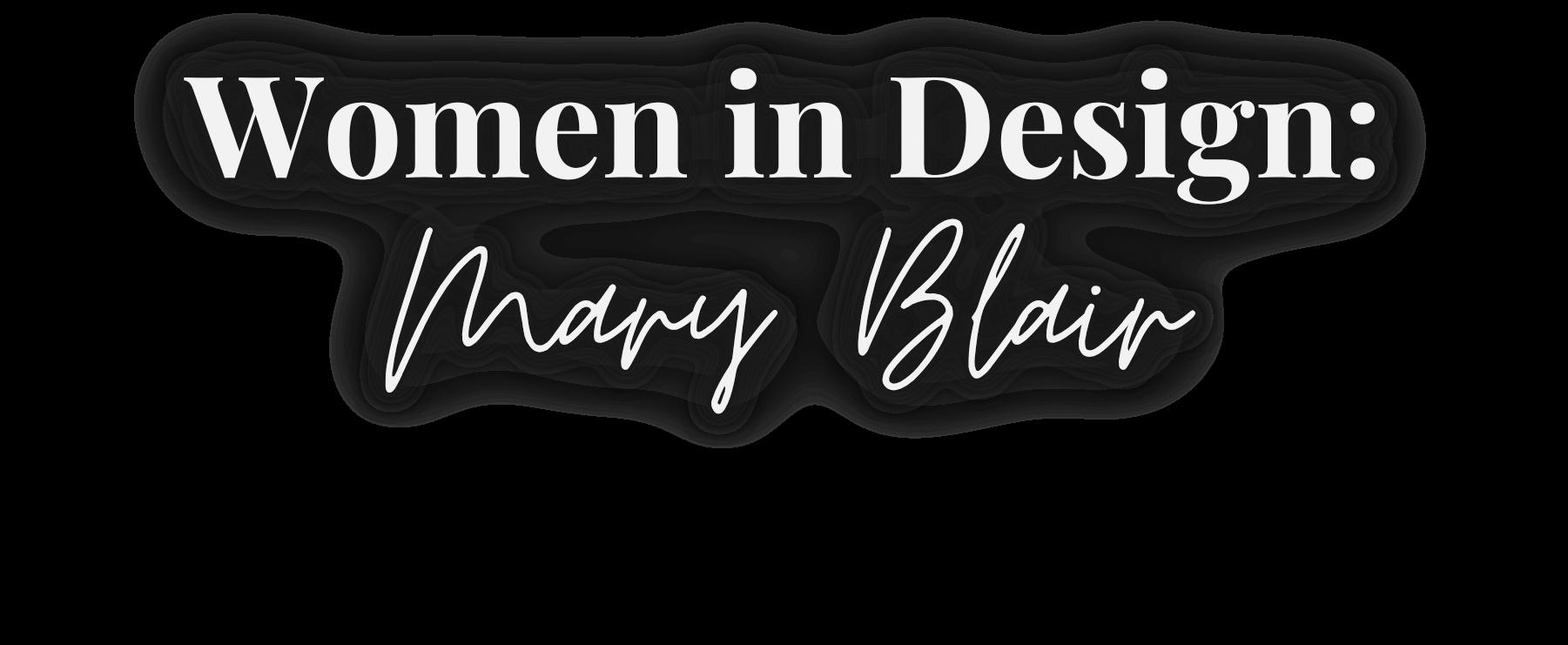 By Tanmayee Iskapalli
By Tanmayee Iskapalli
Disney is home to many of the most memorable films in the history of animation. These films such as Cinderella or Alice in Wonderland are known for their vibrant color palettes and lively characters. One of the animators that helped pioneer this style for Disney was Mary Blair.
Mary Blair grew up in Texas but moved to California to attend San Jose University in her early twenties. During her time at the San Jose University, she was recognized as a promising artist and was awarded a scholarship to Chouinard Art Institute. After Blair’s graduation, her creation and utilization of unique color palettes quickly caught the attention of animation studios. In 1940, she started to work at Disney’s animation studios.
The design/animation industry was (and still is) a very male dominated industry. The only department Disney hired women to work in at the time was the “Ink and Paint” department. The workers there traced and tinted every scene needed for animation. It was an extremely tedious job that came with little recognition and even less pay. Mary Blair being hired as an art supervisor and color stylist showed that women could be just as skilled as men and broke the standard of women artists not being taken seriously.
Moreover, Blair’s time spent at Disney forever changed the design style of the company. She used colors that other people had never seen. This use of color combined with her playful art style was praised by Walt Disney himself. Even though Blair gained the respect of many, her male

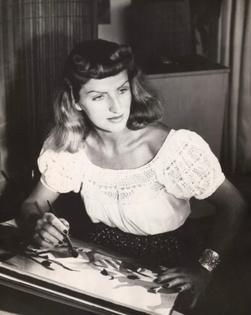
coworkers dismissed her work as too colorful and abstract. Despite Blair continuously proving herself as a gifted artist, they persisted in belittling her work. However, this inspired her to further lean into the whimsical aspect of her designs, garnering even more praise and earning her more projects.
Her most famous scene she has worked on is the dress transformation scene in Cinderella. She has also worked on Sleeping Beauty, Peter Pan, and The Three Caballeros. Even after leaving Disney, she was invited to design for It’s A Small World (a ride at the Disney parks). Despite her impressive resume, Blair has only recently started getting the recognition she deserves for her contributions. Before, only the male animators’ names were attached to these scenes and not the artist who drew/created them. Mary Blair finally being recognized as an integral part of Disney gives hope to other female designers and animators that they can pursue their true passions and be given the recognition they deserve.
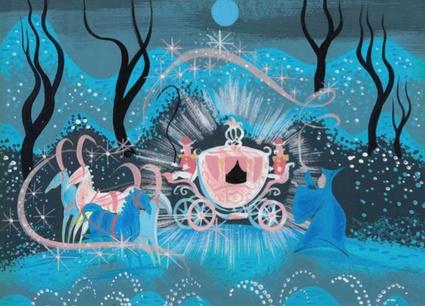
Guess whom I love:
For she is as humble as a dove, Her skin softer than silk, Maybe smoother than buttermilk. She smells of velvet cake, And oh for Heaven's sake!
Taller than a sycamore tree... Perhaps to me.
A queen with no riches, But at least her soul is not full of stitches. Her eyes, her eyes! They stutter my cries; As life tears me apart, She mends back my broken heart.
If you have guessed, it is not a friend or a lover, But my mother, who is better than any other.
Truth may have hurt, but it set me free from the lies.
Regret still aches, but I will rise.
Under life’s pressure, but I stood tall.
Ending seemed near, but it was a new beginning for all.
Surrounded by chaos, but I went with the flow.
Unclean as can be, but I still have my glow.
Recklessness taunts me, but I will make way.
Victory is far from my reach, but I will seize the day.
In the darkest of hours, but I will shine.
Vulnerable to the world’s mockery, but I will do just fine.
On life's pages, but I write my own story.
Remember, you and I are destined for glory.
Poems by Janetta O’KrayWhen life seems to drag you
Down into its pits of relentless chaos
Remember this….
You are the light of the world
You are the author of your book
You are the rainbow on a rainy day
You are a priceless treasure
You are a star of the heavens
You are the captain of your ship
Even though life seems like the captain itself
But you determine your destiny
No matter what the lies whisper to you
Or the many mistakes you make
You are an inspiration worth living for
CMHSGirlUphosteditsfirst-everYoungWomen’sTalentShowcasethis Saturday,March2.Wegottoshowcasesomeincrediblemusicalandvocaltalent fromacrosstheparish,includingMagnetstudentsandalum!
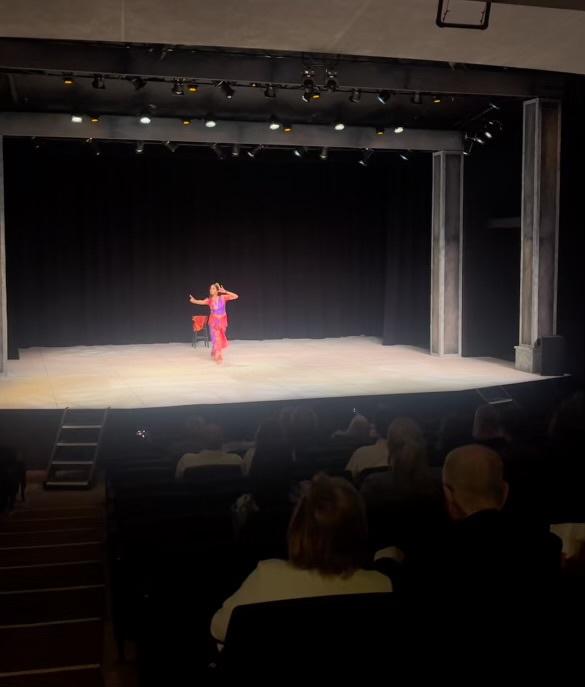
Whenwedecidedtotakeonthechallengeofafull-blownshowcase,wewere nervous nonon-performanceclubhasreallydonesomethinglikethisatMagnetin recentyears.Thereweresomanyfactorstoconsider:Wherewouldweholdit?How manypeoplewouldaudition?Howmuchmoneycouldwemakeanddonate?Itwas ahugebartoleapover,evenforthefirsttime butweallmadeitjustfine.
Forourfirstyear,wemadeaprofitof$200andALLofthatmoneywentstraight totheUNFoundationtofundtheneedsofyoungwomeninunderdeveloped countriesandcommunities.Yourattendanceandcontributionshelpedusraisethat, andnextyear,wearehopingtomakeitevenbetter!
Thankyouforattendingourfirst-everShowcase!We’relookingforwardto goingbiggereveryyear.

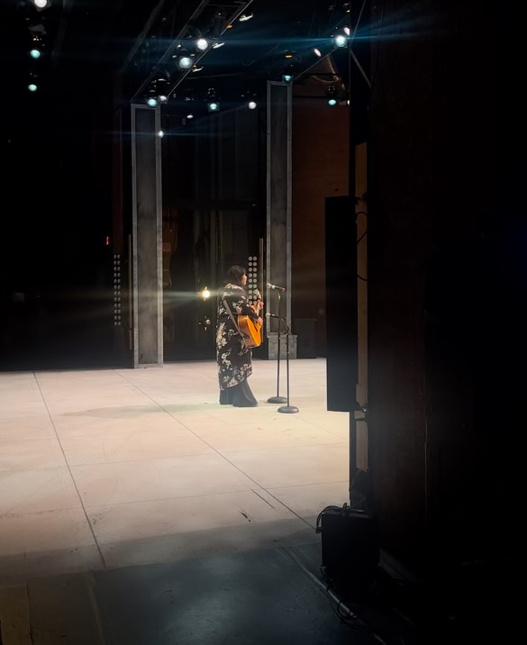

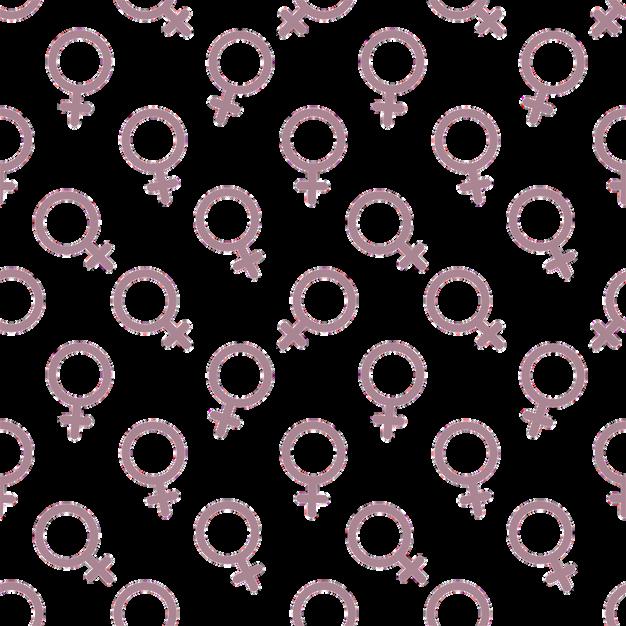
1. What noted French feminist is responsible for writing the second-wave feministinciting classic The Second Sex?



2. An early example of bra burning took place at what otherwise non-feministfriendly event in 1968?
3. “The Problem that has no Name” is a phrase describing the plight of women that was coined by Betty Friedan in what feminist tract?
4. What former Massachusetts representative was the first woman to run on a presidential ticket?
5. In 2002, who became the first black woman to win Best Actress at the Oscars?
6. Who is the only woman to win two Nobel prizes?


7. Both of the longest-reigning British monarchs have been women with what name?

8. Billie Jean King defeated Bobby Riggs in a tennis match known by this name.
9. Two key female leaders on the Indian subcontinent were assassinated in 1984 and 2007. Who are they?
10. In 1893, what country became the first to allow universal women’s suffrage?



1.



Simone de Beauvoir
Miss America Pageant
2. The Feminine Mystique
3. Geraldine Ferraro
4. Halle Berry
5. Marie Curie
6. Elizabeth7. Battle of the Sexes
8. Indira Gandhi (India) and Benazir Bhutto (Pakistan)
10.
9. New Zealand








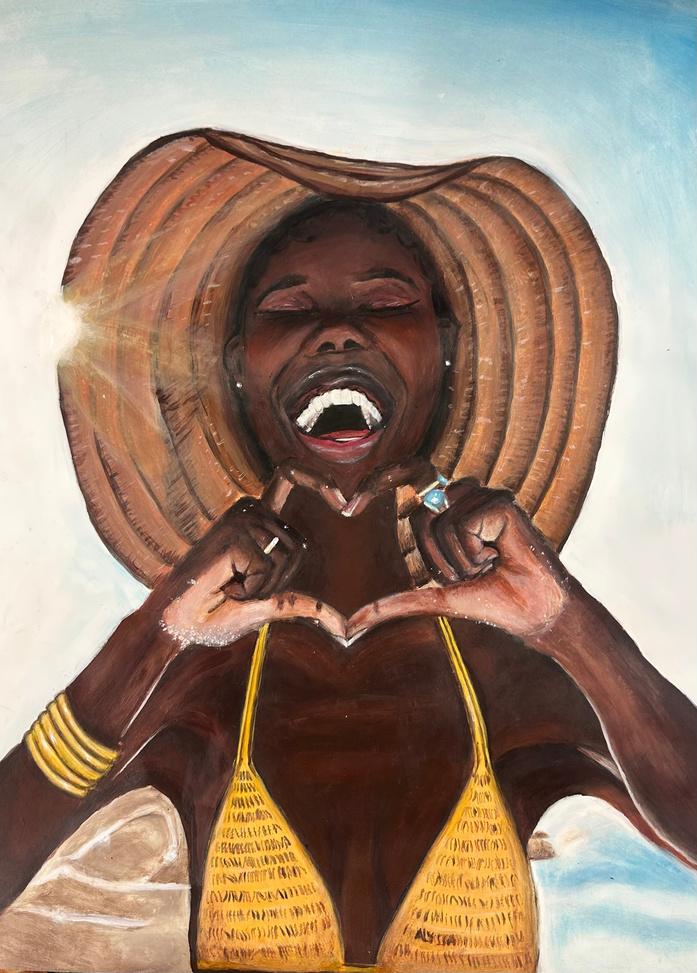 BY ALYSSA WARD
BY ALYSSA WARD

 BY BENNY ESTES
BY BENNY ESTES



